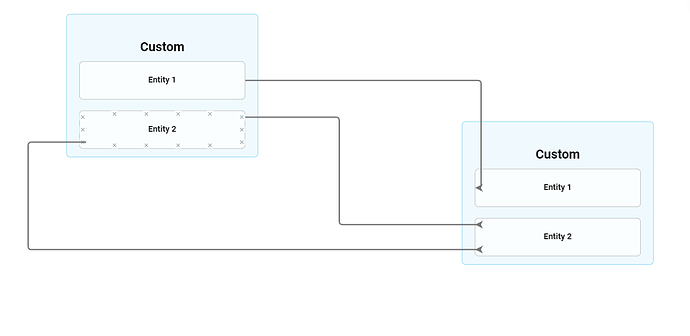I am creating ports using fractional values in go.Spot. But the links going out and in to ports that are not in the middle have alignments issues.
I have attached a screenshot to explain it better.
Is there any alignment configuration that is needed?
This is my port creation function -
function makePort(name, spot) {
return $(
go.Panel,
'Auto',
{
desiredSize: new go.Size(10, 10),
alignment: spot,
fromSpot: spot,
toSpot: spot,
cursor: 'pointer',
fromLinkable: true,
toLinkable: true,
},
new go.Binding('portId', 'key', key => `${name}::${key}`),
$(go.Shape, 'Rectangle', {
fill: lightBlue[50],
stroke: null,
desiredSize: new go.Size(10, 10),
}),
$(go.Shape, 'XLine', {
fill: null,
alignment: go.Spot.Center,
stroke: blueGrey[500],
desiredSize: new go.Size(5, 5),
})
);
}
Also, I use this to display the ports on mouseOver a node. But cannot figure out how to get access to the XLine shape in the port here -
/**
* function to conditionally make ports visible
* @param {go.Node} node
* @param {boolean} show
*/
function showPorts(node, show) {
node.ports.each(function(port) {
if (port.portId) {
// change port XLine stroke color here
}
});
}


